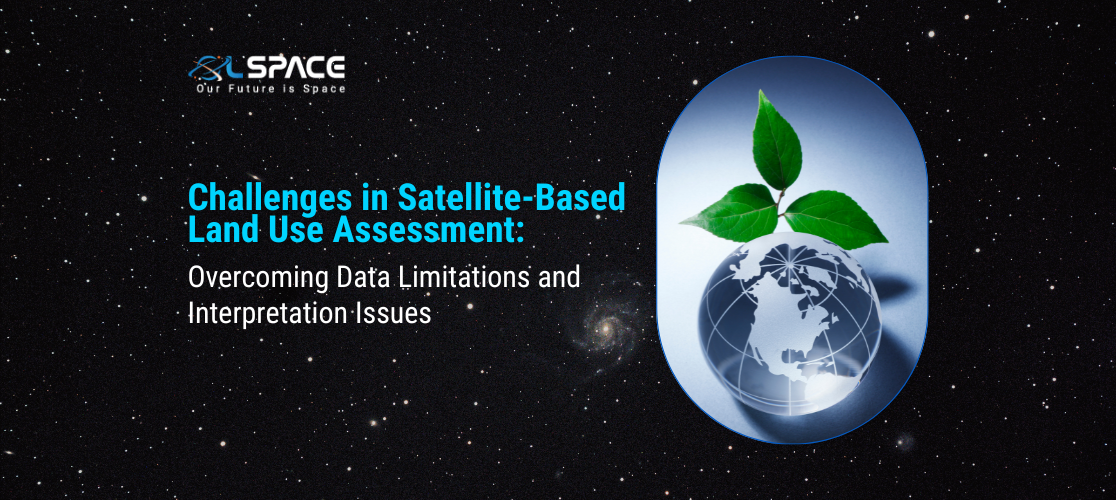27 October 2023
Challenges in Satellite-Based Land Use Assessment: Overcoming Data Limitations and Interpretation Issues

Satellite-based land use assessment has become a fundamental tool for monitoring and managing land resources, environmental changes, and urban development. However, this approach is not without its challenges. In this blog, we will explore the key challenges in satellite-based land use assessment, focusing on data limitations and interpretation issues, and discuss strategies to overcome these hurdles.
Challenges in Satellite-Based Land Use Assessment
Data Limitations:
a. Spatial and Temporal Resolution: Satellite imagery often comes with limitations in spatial and temporal resolution. Low-resolution data may not capture fine-grained land use details, while infrequent revisits may hinder the tracking of rapid changes.
b. Data Availability: Access to up-to-date, high-quality satellite imagery can be costly and may not always be available, particularly for remote or conflict-prone regions.
c. Cloud Cover and Atmospheric Interference: Weather conditions and atmospheric disturbances can affect the quality of satellite imagery, making it challenging to obtain clear and usable data.
d. Satellite Sensor Variability: Different satellite sensors may capture data in varying spectral bands and resolutions, which can complicate data integration and analysis.
Interpretation Issues:
a. Land Use Classification: Accurately classifying land use based on satellite imagery is a complex task. Land use categories often overlap, and the same land can serve multiple purposes.
b. Data Validation: Ground truth data for validation and calibration are essential but can be limited or difficult to obtain, particularly in remote or conflict-affected areas.
c. Seasonal Variability: Land use can change seasonally, making it necessary to consider the timing of satellite data acquisition for accurate assessment.
d. Urban Sprawl and Dynamic Land Use: Rapid urbanization and dynamic land use changes can challenge the ability to keep land use databases up to date.
e. Mixed Pixels: Satellite imagery often captures mixed pixels, where multiple land uses are present in a single pixel, making classification and interpretation more complex.
Overcoming Data Limitations and Interpretation Issues
Data Fusion: Combining data from multiple satellite sensors with different characteristics can improve the overall quality of the information collected, enhancing both spatial and spectral resolution.
Cloud Removal Algorithms: Advanced algorithms can help mitigate the impact of cloud cover and atmospheric interference, allowing for clearer imagery.
Machine Learning and AI: Utilizing machine learning algorithms, such as convolutional neural networks, can enhance land use classification accuracy by automating the process and learning from a diverse dataset.
Crowdsourced Data and Citizen Science: Engaging the public in data collection and validation can provide valuable ground truth data and help address limitations in remote or inaccessible areas.
Time Series Analysis: Analyzing a time series of satellite images can capture seasonal variations and dynamic land use changes, enhancing the accuracy of assessments.
Public-Private Partnerships: Collaboration between governmental agencies, private satellite companies, and research institutions can improve data access and sharing, promoting more comprehensive land use assessments.
Regular Updates: Ensuring that land use databases are updated regularly to reflect ongoing changes, especially in urban areas, is crucial for accurate assessments.
Conclusion
Satellite-based land use assessment is a powerful tool for monitoring our changing world. While data limitations and interpretation challenges exist, the combination of advanced technologies, data fusion, machine learning, and community engagement offers the potential to overcome these hurdles. By addressing these challenges, we can create more accurate and up-to-date land use assessments, supporting informed decision-making for sustainable land use and resource management.
